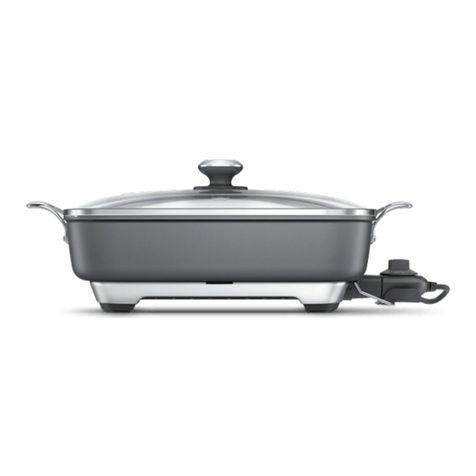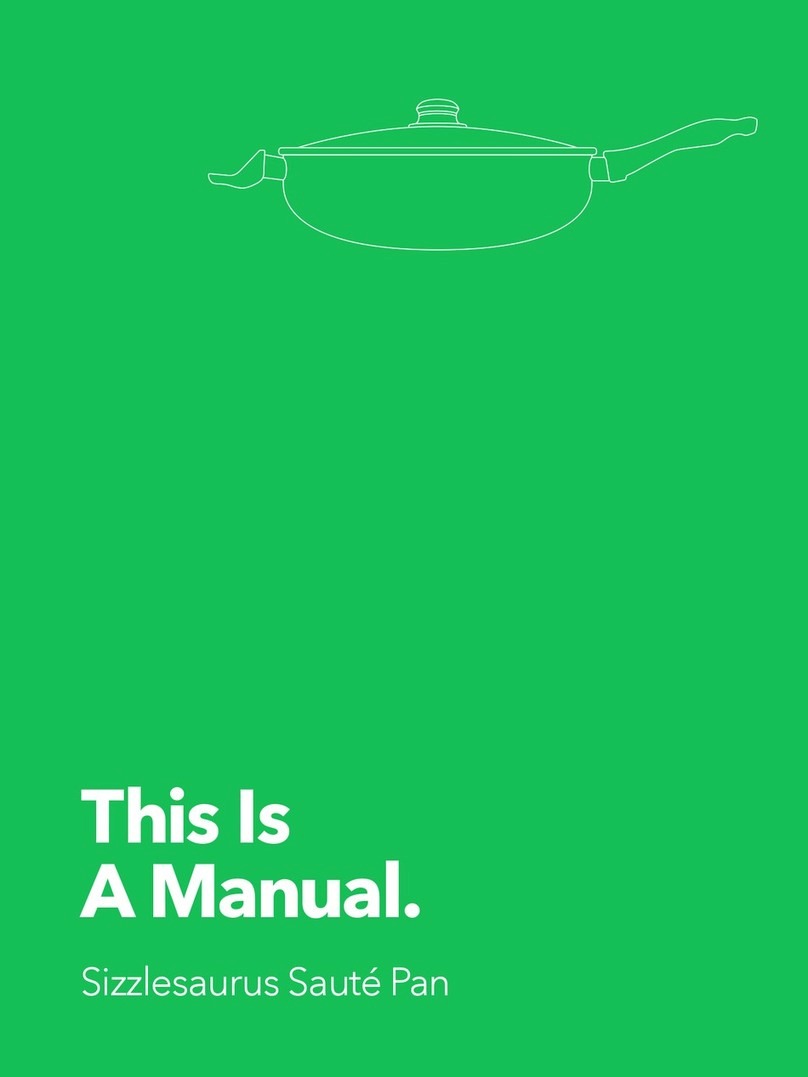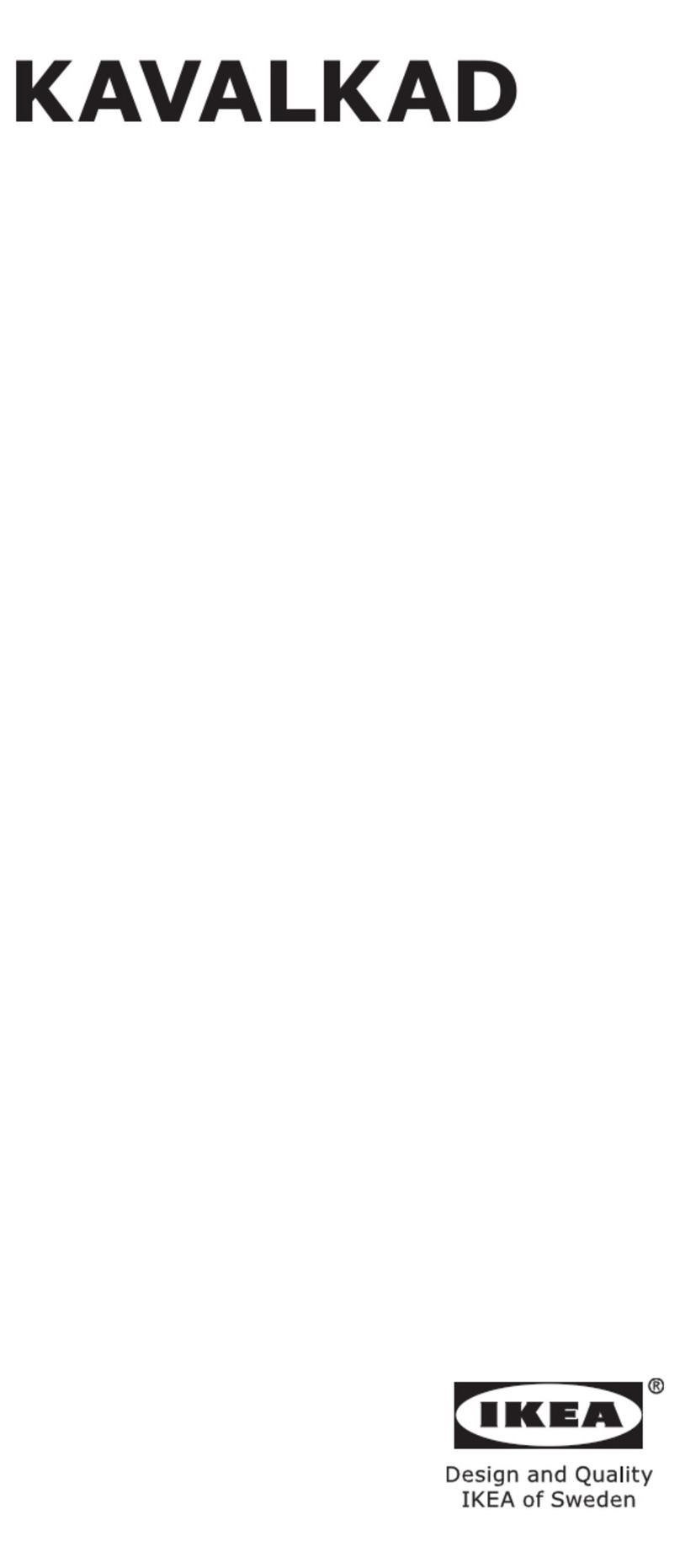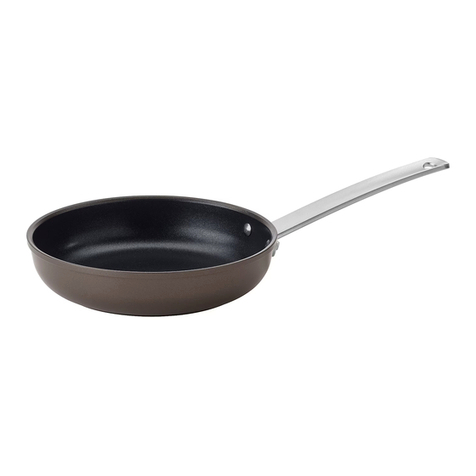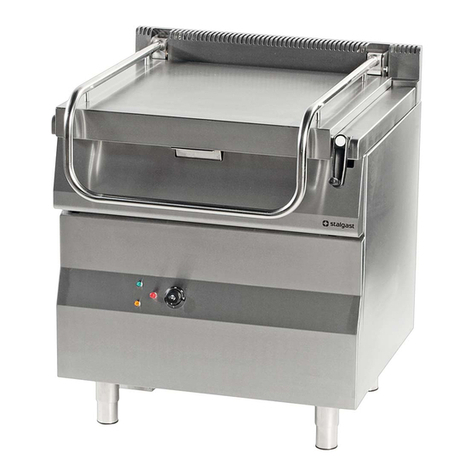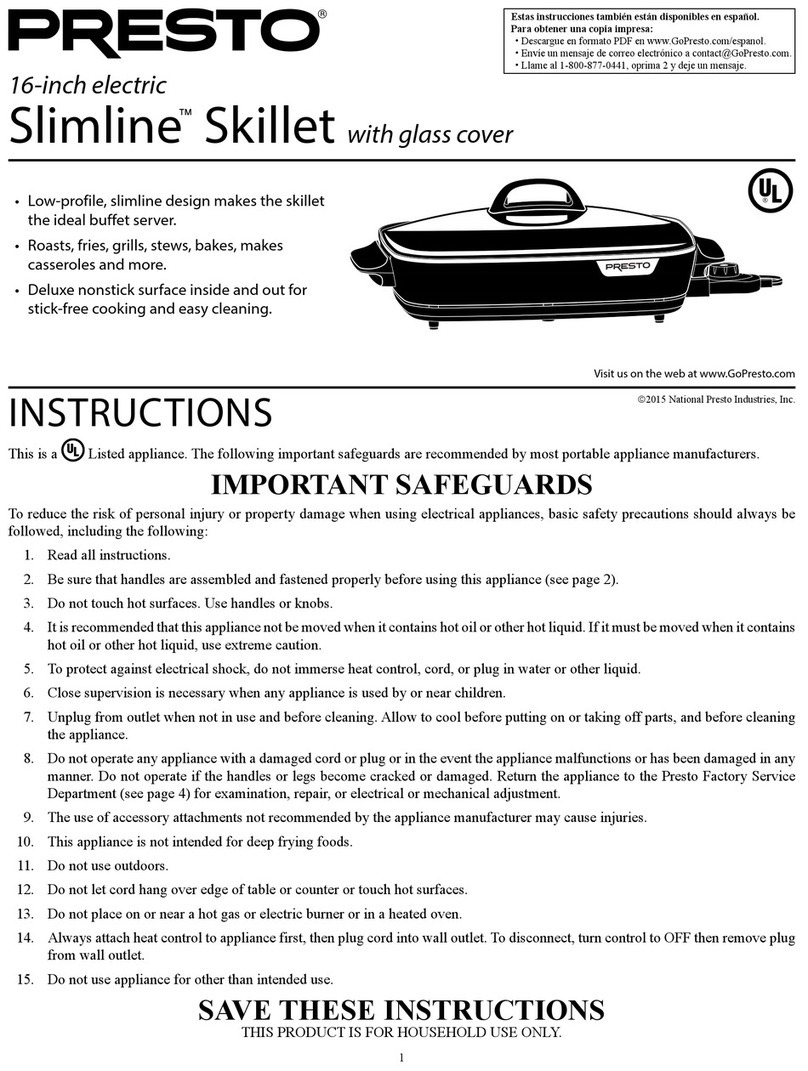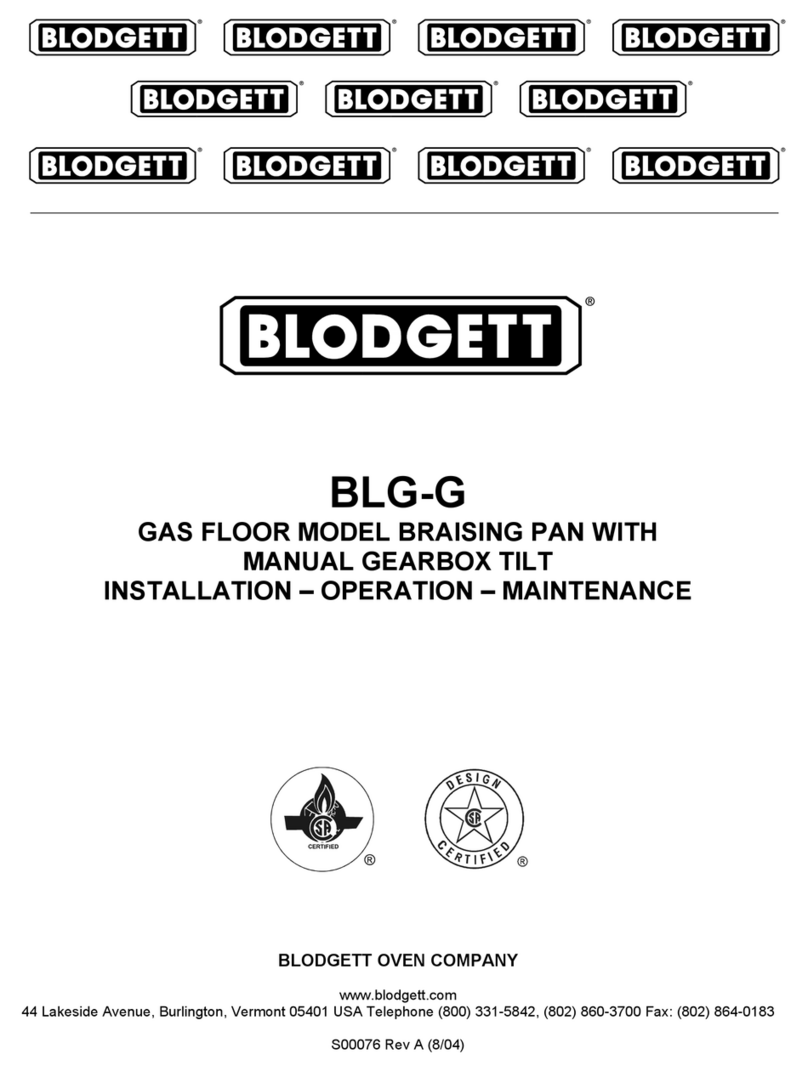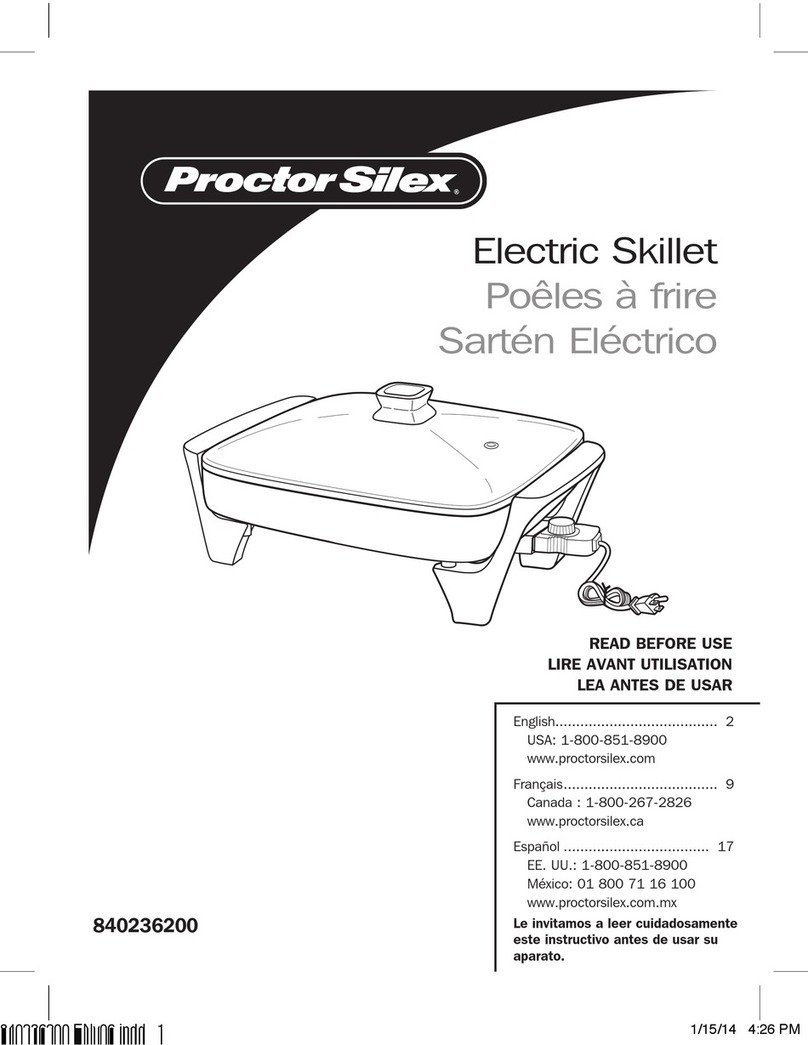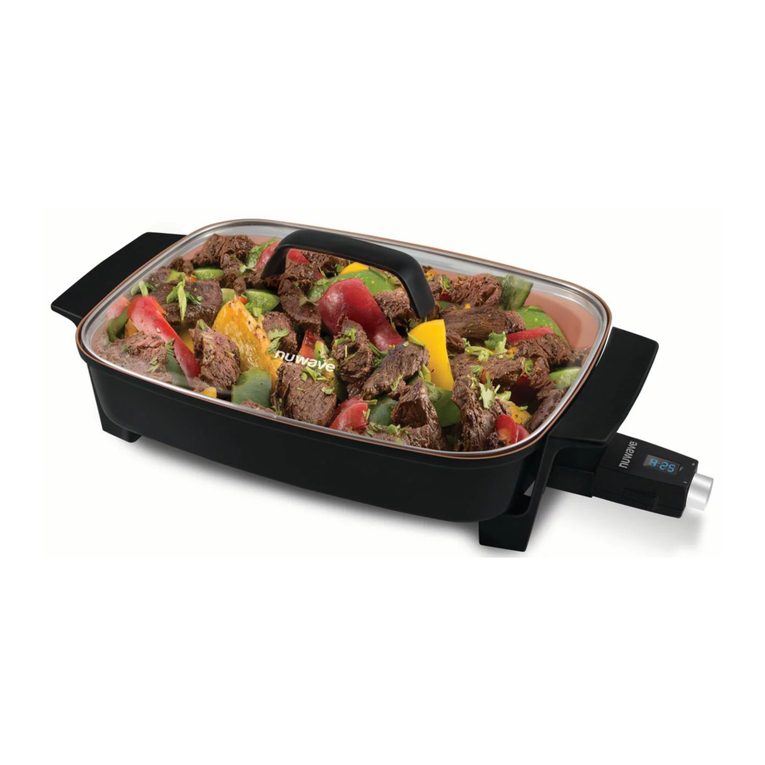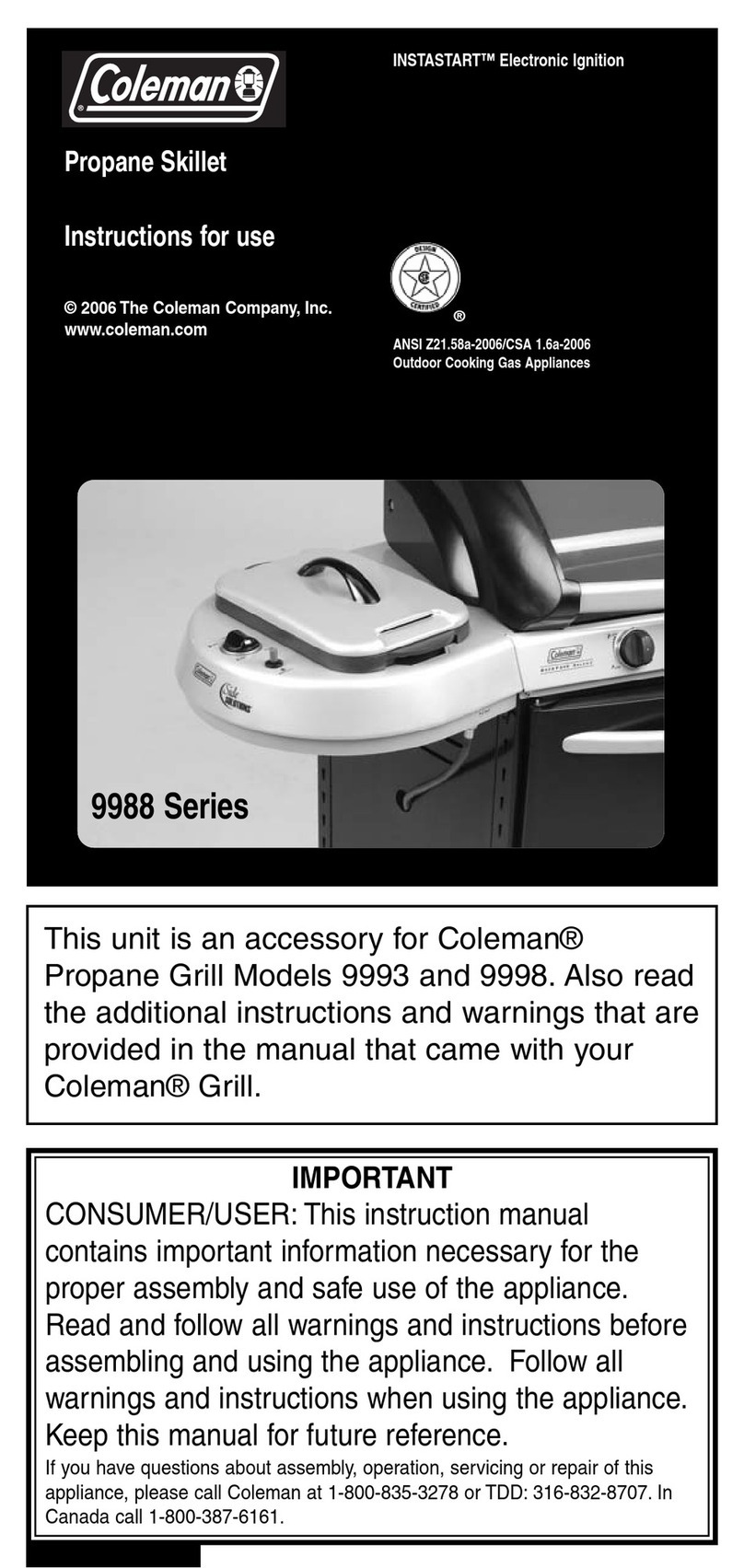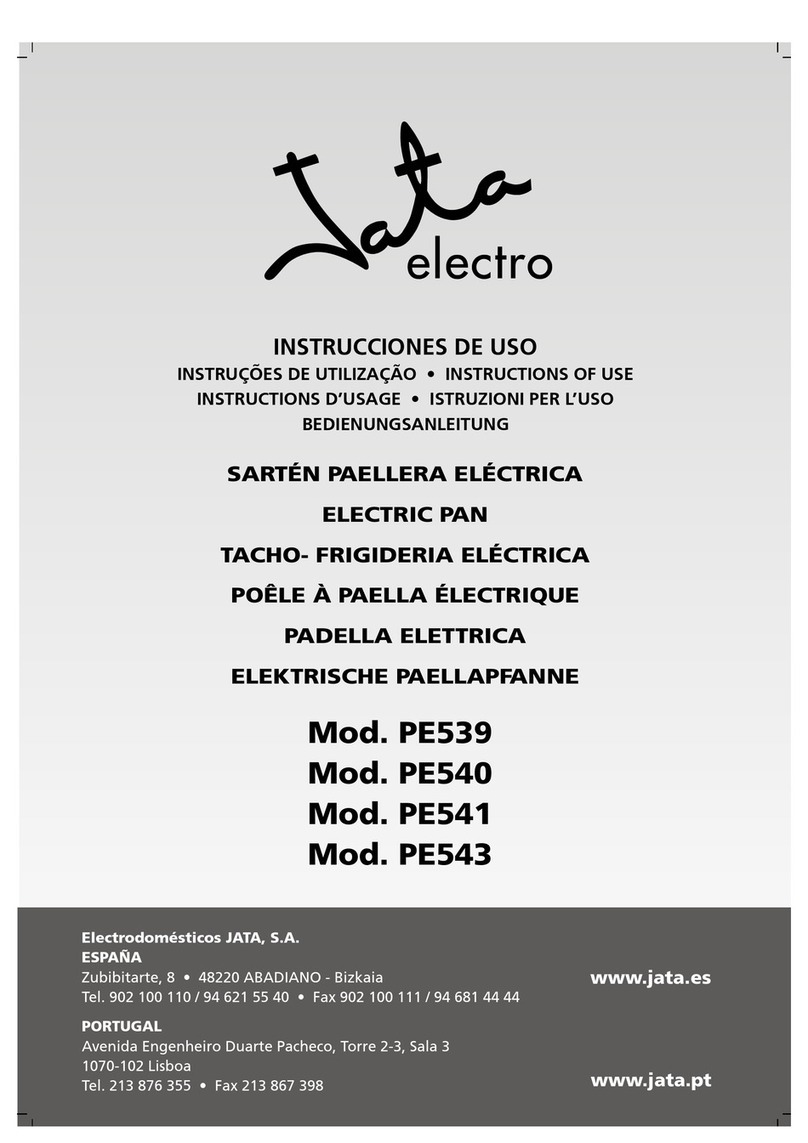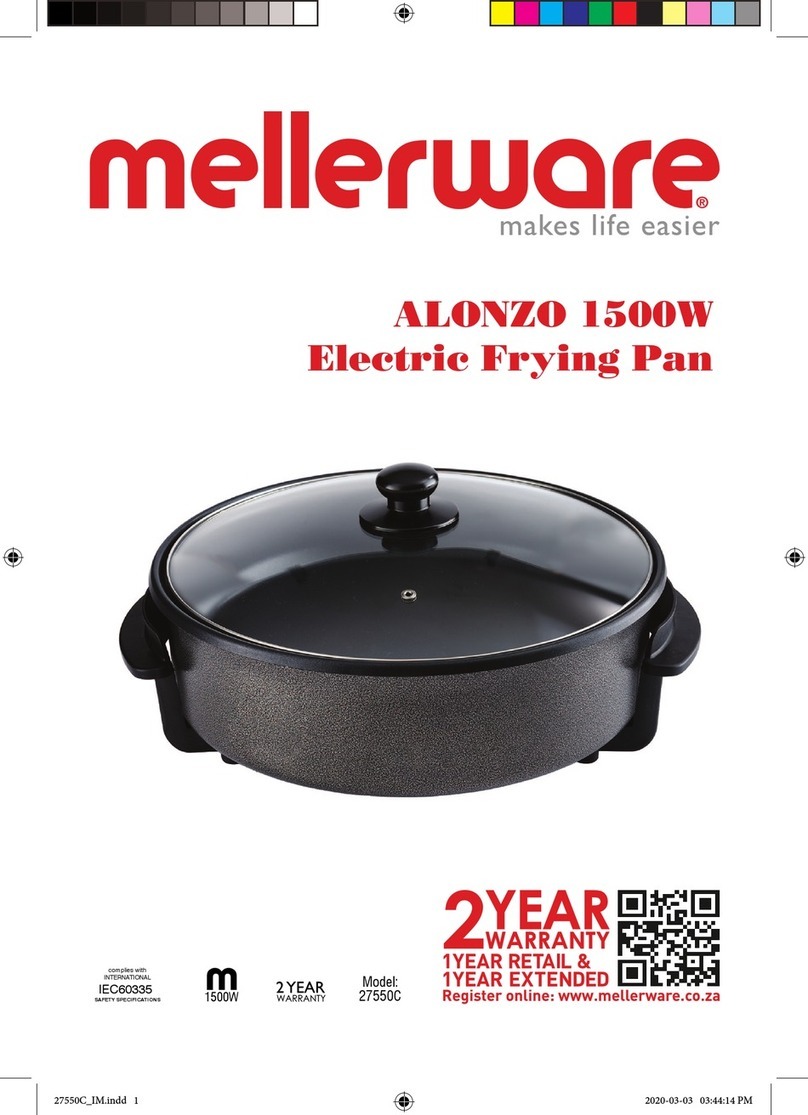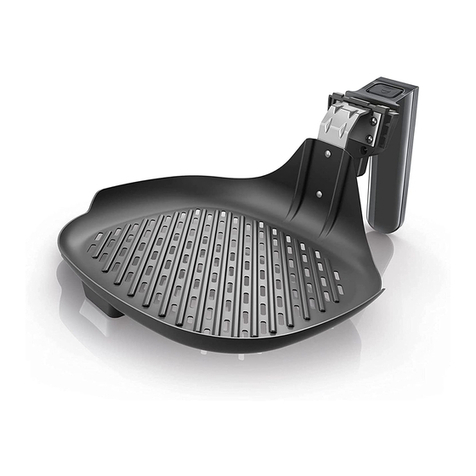
10
Tips
STIR FRYING
Recommended temperature probe setting:
SEAR for vegetables, PAN FRY for
sealing meat.
• Preheat your skillet before adding any
ingredients, allowing the temperature light
to cycle “ON” and “OFF” several times.
This will allow the skillet to reach an even
higher temperature.
• Stir frying is a dry heat cooking method
and is best suited to tender cuts of meat.
Timing is a key factor as over cooking will
give a tough, dry result. Cooking times will
depend on the size and thickness of the
cut, ie. the bigger the cut, the more time is
needed.
RECOMMENDED CUTS FOR STIR FRYING
Beef
Lean beef strips prepared from topside,
rump, sirloin, rib eye, fillet.
Chicken
Lean chicken strips prepared from
breast fillets, tenderloins, thigh fillets.
Lamb
Lean lamb strips prepared from fillet, lamb
leg steaks, round or topside mini roasts,
eye of loin.
Pork
Lean pork strips prepared from fillet
or medallion steaks.
Seafood
Whole peeled prawns, cleaned squid strips,
mussels and cracked crab.
STIR FRY TIPS
• Stir fry strips in small batches (approx 1lb)
to prevent overloading pan and allowing
the meat to “stew” in its juice, resulting in
tougher meat.
• When adding meat strips to the skillet,
the meat should sizzle.
• Stir fry strips for 1–2 minutes per batch.
Any longer will toughen the meat.
• Remove each batch once cooked and allow
the skillet to reheat before stir frying the
next. By cooking in small batches, the heat
of the skillet remains constant, ensuring the
meat doesn’t stew and toughen.
• Drain off the marinades from meat
strips before stir frying to prevent stewing
and splatter.
• Stir fry vegetables with a little oil or
sprinkling of water until vivid in color.
Cooking time Ingredients
3 minutes Quartered onion, broccoli
florets, sliced carrot,
green beans
2 minutes Snow peas, bell pepper,
sliced zucchini, sliced water
chestnuts, bamboo shoots
1 minute Chopped garlic, minced
chilli and ginger, sliced
green onions, bean sprouts
These brief cooking times will keep
vegetables crisp.
• Peanut oil is traditionally used for Asian
stir fry dishes. However, other oils such as
canola, rice bran oil and even light olive oils
may be used.
• Do not over fill the skillet. Always cook in
small batches and reheat at the end of stir
frying by returning the meat to the pan with
simmering sauce and vegetables.
• If using this method, remember to under
cook meat slightly so that reheating will not
spoil and toughen the finished dish.
• Serve stir fried foods immediately
to retain their crisp texture.






